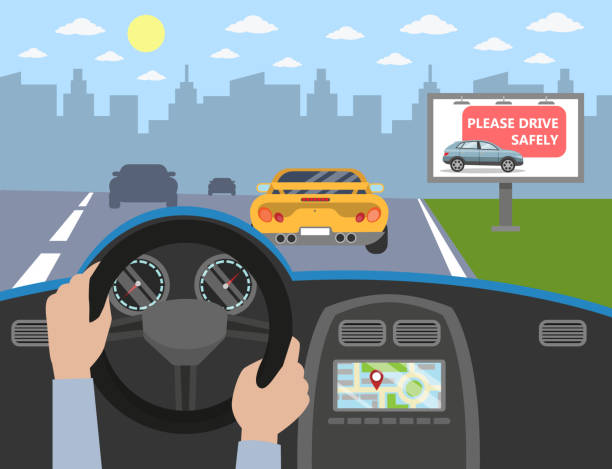Most driver mistakes are caused by bad habits in the way they use their eyes. How you use your eyes will determine how safely you drive. New drivers who have just got their licenses tend to concentrate directly in front of their cars, whether making a turn or going straight. It is because moving the vehicle is a new experience for them.
You remember that when you were learning to ride a bike, you wanted to concentrate your eyes on the pedals. It is the same mindset here, except the pedals become the front of the car.
So how should you use your eyes? Follow the following three basics rules:
1. Look Ahead, Not Down
Your attention should be focused on the road ahead, following your intended path of travel. It would be best if you allowed a visual lead-time of at least 20-30 seconds. You will still see what is happening in front of the car if you look ahead. That is because as your peripheral vision helps you to look ahead, your side vision will take care of the rest.
But if you concentrate your peripheral vision down in the immediate front of the car, you would not see what is happening far ahead, so you cannot prepare to react to whatever danger is ahead of you.
It could be a deer crossing the road, or the car ahead suddenly pulling the brakes, requiring you to react accordingly. If you didn’t see it happening, it would take you by surprise, which would delay your reaction.
2. Keep Your Eyes Moving
With your eyes moving, you can select details on the traffic scene, mentally calculate the distance between your car and the vehicle in front, and check other objects ahead. Roadway and the scenes keep changing as you drive, so search for clues to these changes. Stay alert for changes that could require you to readjust your speed
3. Get The Big Picture
You should be searching the whole scene, not just part of it. Keep on checking the rear-view mirrors to see ahead and behind you. As you approach an intersection, watch for vehicles and pedestrians moving in all directions, for traffic control devices, and anything else that may block your vision or increase risk.
Always look to each side of your vehicle at intersections, crosswalks, and railroad crossings. At intersections: Look both ways even if other traffic has a red traffic signal light or a stop sign. Look to the left first, since vehicles coming from the left are closer to you than vehicles coming from the right







